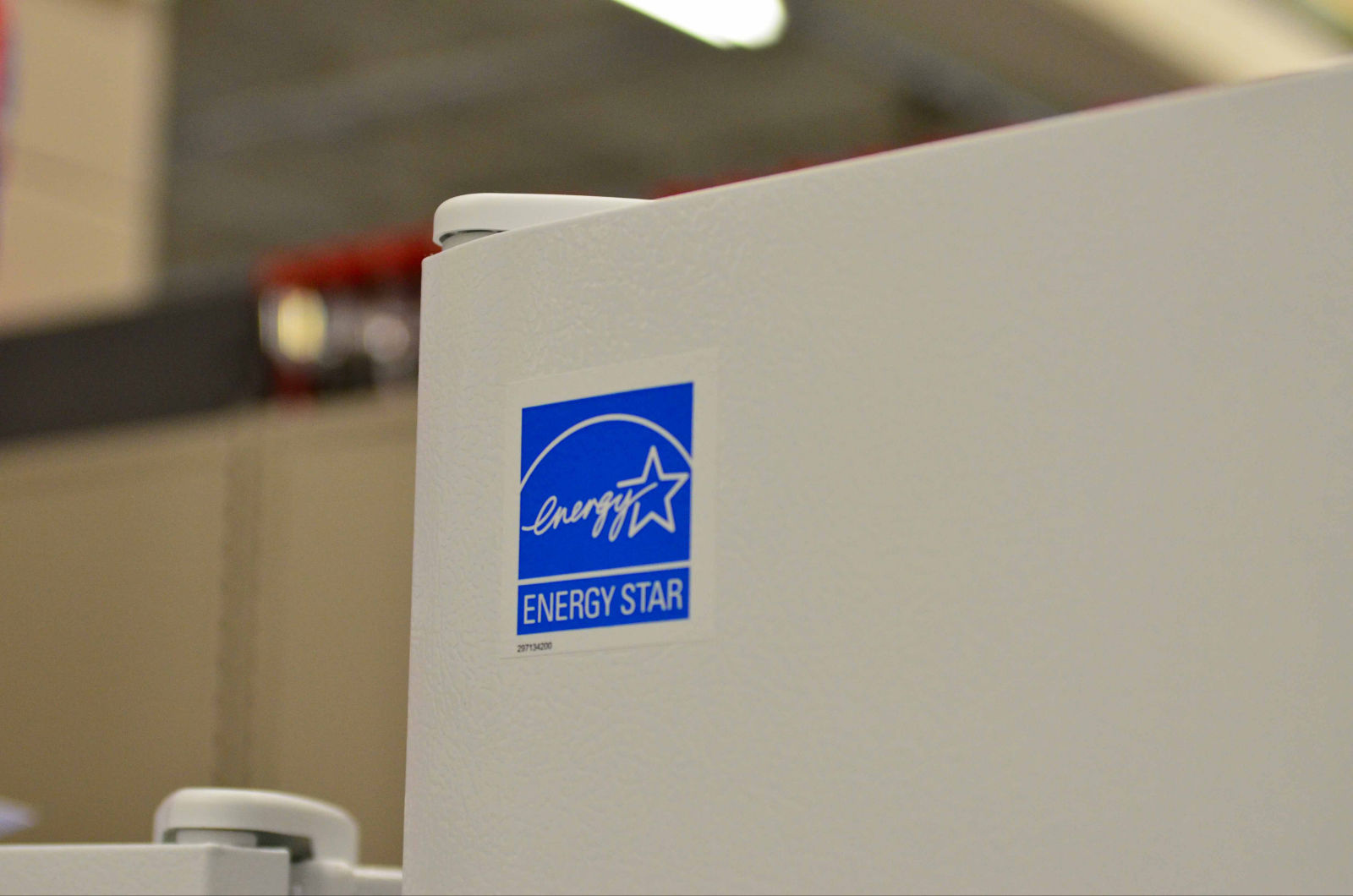Our current energy use is like leaving your front door open in the middle of the winter: wasteful and unnecessarily expensive.
But just like you can close the door, there's a simple solution to reducing our energy use: making common products more energy efficient.
We need to stop wasting energy
 Energy use is growing almost three times as fast as our population, but that's only part of the problem. From the time a power plant burns a ton of coal or splits an atom to the time we turn on the lights, we lose two-thirds of that energy. As we shift to clean, renewable energy sources like solar, wind and biomass, we also need to be reducing our energy use now.
Energy use is growing almost three times as fast as our population, but that's only part of the problem. From the time a power plant burns a ton of coal or splits an atom to the time we turn on the lights, we lose two-thirds of that energy. As we shift to clean, renewable energy sources like solar, wind and biomass, we also need to be reducing our energy use now.
Energy efficiency is the quickest, cheapest and cleanest way to get smart about energy use and cut down on the waste. We can start by passing statewide efficiency standards.
Dirty, dangerous, expensive sources
 | |
|
A dirty mix: Fifty-four percent of Illinois' electrical generation relies on outdated fossil fuel technologies. The other 45 percent of our energy comes from nuclear power plants.
Dangerous byproducts: The power plants that supply our energy emit 64 percent of Illinois' deadly soot pollution, and create 120 tons of radioactive waste each year.
Rising costs: This winter, heating bills are expected to increase by 30 percent. On top of this, Illinoisans already pay five percent more for electricity than residents of other states.
The time is now
 A close look at energy policy: With Illinois' budget issues and high energy costs, Gov. Blagojevich's campaign pledged support for energy efficiency policies, including appliance efficiency standards. This is the time to act to reduce our energy waste.
A close look at energy policy: With Illinois' budget issues and high energy costs, Gov. Blagojevich's campaign pledged support for energy efficiency policies, including appliance efficiency standards. This is the time to act to reduce our energy waste.
Strong voices for energy waste: But power companies like Midwest Generation, whose profits increase with our energy waste, hold a lot of weight in Springfield. In addition, manufacturers who make inefficient products need a push to begin making these items responsibly.
A clean, simple solution
 | |
|
Improving everyday products: We need to set standards so that things we all take for granted run more efficiently and use less energy. These standards would make use of existing technologies like those in Energy Star products.
Making a big difference now: Setting minimum efficiency standards is the cheapest, quickest, cleanest way to get us on the smart energy path right now. By 2020, we would save more energy than is used by Springfield and Naperville combined. By 2030, we would save over $1.7 billion and eliminate the need for several power plants.
Energy Efficiency Standards Bill
 The Energy Efficiency Standards Bill would set new energy standards for common products sold in Illinois. What does that mean? Once the law took effect, all the ceiling fans and torchiere lamps sold would waste far less energy than they do now. It means the exit signs, vending machines and traffic signals you see daily would be more energy-efficient. It means businesses would use more efficient clothes washers, air conditioners and heaters.
The Energy Efficiency Standards Bill would set new energy standards for common products sold in Illinois. What does that mean? Once the law took effect, all the ceiling fans and torchiere lamps sold would waste far less energy than they do now. It means the exit signs, vending machines and traffic signals you see daily would be more energy-efficient. It means businesses would use more efficient clothes washers, air conditioners and heaters.
Most importantly, it would mean Illinois would use a lot less energy, and lllinois consumers would save billions of dollars. Thanks to the law of supply and demand, that would mean fewer price spikes. And as energy efficiency reduces the use of old, dirty power plants, that would mean cleaner air.
Fact sheet: Illinois Energy Efficiency Standards Act: Saving Energy, Money and the Environment 3/04
 What you can do to help
What you can do to help
Shop for energy efficient products: The EPA has labeled many of these with an Energy Star.
Write to your newspaper: Write a letter to the editor of your local newspaper in support of minimum efficiency standards in Illinois.
Our next steps
Illinois PIRG will seek to further reduce our dependence on fossil fuels and promote smarter energy choices by:
• Setting energy efficiency codes for Illinois' buildings.
• Increasing funding for energy efficiency programs.
• Promoting the use of energy-efficient vehicles.
Read the report: Saving Energy, Money And The Environment: Energy Efficiency Standards For Illinois
News Releases
• With Energy Prices Rising, Illinois PIRG Calls for State Action 11/2/05
Reports
• Protecting Consumers from Rising Energy Costs: Real Solutions to Help Homeowners and Businesses Reduce Their Energy Bills, This Year and Beyond 11/2/05
• Saving Energy, Money And The Environment: Energy Efficiency Standards For Illinois 2/26/03

No comments:
Post a Comment